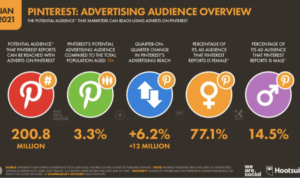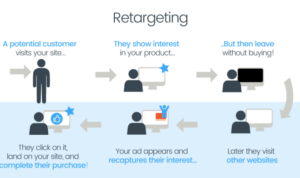Generating Traffic with Social Media sets the stage for boosting online visibility through strategic use of various platforms, compelling content creation, influencer collaborations, and targeted paid advertising. Dive into the world of social media traffic generation and discover the keys to success.
Maximizing Social Media Platforms

Using multiple social media platforms is crucial for maximizing traffic to your website or business. Each platform has its own unique audience and features, allowing you to reach a diverse group of potential customers. By utilizing various platforms like Facebook, Instagram, Twitter, LinkedIn, etc., you can increase your brand visibility and engagement across different demographics.
Strategies for Tailoring Content
When creating content for different social media platforms, it’s important to consider the specific characteristics of each platform. For example, Instagram is more visual, so focus on high-quality images and videos. Twitter requires concise messaging, so keep your tweets short and engaging. LinkedIn is more professional, so share industry insights and thought leadership articles. By tailoring your content to suit each platform, you can effectively capture the attention of users and drive traffic to your website.
Cross-Promoting Content
Cross-promoting your content across various social media channels can significantly increase your reach and engagement. For example, you can share a blog post on Facebook and then repurpose it into a series of tweets on Twitter. You can also create Instagram Stories to promote a product featured in a LinkedIn article. By leveraging the strengths of each platform and cross-promoting your content, you can drive traffic from multiple sources and maximize your online presence.
Creating Engaging Content: Generating Traffic With Social Media

Creating engaging content is crucial for catching the attention of social media users and driving traffic to your platforms. Here are some tips to help you create content that resonates with your audience.
Types of Content
- Videos: Short, engaging videos tend to perform well on social media platforms like Instagram and TikTok.
- Images: Eye-catching visuals can attract users’ attention as they scroll through their feeds.
- Infographics: Visual representations of data or information are easily shareable and digestible.
- Blogs: Well-written and informative blog posts can provide value to your audience and encourage engagement.
Captivating Captions and Headlines
- Keep it concise: Captions and headlines should be short and to the point to grab users’ attention quickly.
- Add emojis: Emojis can help convey emotion and make your content more engaging.
- Pose a question: Asking a question in your caption can prompt users to engage with your post by leaving comments.
- Use humor: Injecting humor into your captions or headlines can help your content stand out and resonate with your audience.
User-Generated Content vs. Professionally Created Content
- User-Generated Content: User-generated content can be more authentic and relatable to your audience, leading to higher engagement rates.
- Professionally Created Content: Professionally created content may have higher production value and polish, but it can sometimes feel less genuine to users.
- Combining Both: A mix of user-generated content and professionally created content can provide a well-rounded approach to engaging your audience.
Leveraging Influencer Partnerships
In today’s digital age, collaborating with influencers has become a powerful strategy for brands looking to increase their online presence and reach a larger audience. By partnering with influencers who have a loyal following, businesses can tap into their credibility and influence to promote products or services in a more authentic and engaging way.
Advantages of Collaborating with Influencers
- Increased brand visibility: Influencers can help expose your brand to a larger audience that you may not have been able to reach on your own.
- Build trust and credibility: Followers trust the recommendations of influencers they follow, making influencer partnerships an effective way to build credibility for your brand.
- Engagement and authenticity: Influencers have a unique voice and style that resonates with their audience, making promotional content feel more authentic and engaging.
Successful Influencer Marketing Campaigns, Generating Traffic with Social Media
- Kylie Jenner x Adidas: Kylie Jenner’s partnership with Adidas for the launch of their Falcon sneakers generated massive buzz on social media, leading to a surge in sales and brand awareness.
- Daniel Wellington x Influencers: The watch brand Daniel Wellington’s collaboration with multiple influencers on Instagram helped them establish a strong social media presence and drive sales.
Identifying and Approaching Influencers
- Define your target audience: Look for influencers whose followers align with your target demographic to ensure maximum impact.
- Research and vet influencers: Check an influencer’s engagement rates, content quality, and authenticity before reaching out to them for collaboration.
- Personalized outreach: Approach influencers with a personalized message that highlights why their partnership would be beneficial for both parties.
Utilizing Paid Advertising
In today’s digital landscape, paid social media advertising plays a crucial role in increasing traffic and expanding reach. By investing in targeted ads on platforms like Facebook Ads or Instagram Ads, businesses can effectively connect with specific audiences and drive traffic to their websites or online platforms.
Targeting Specific Audiences
When utilizing paid advertising, businesses have the ability to target specific demographics, interests, behaviors, and locations. This level of targeting ensures that ads are shown to the most relevant audience, increasing the likelihood of engagement and conversions. For example, a fashion brand can target young adults interested in fashion trends living in urban areas, maximizing the impact of their ads.
Tracking and Analyzing Metrics
Tracking and analyzing metrics is essential in optimizing paid advertising campaigns. By monitoring key performance indicators such as click-through rates, conversion rates, and return on ad spend, businesses can gain valuable insights into the effectiveness of their ads. This data allows for adjustments to be made in real-time to improve campaign performance and maximize ROI.





